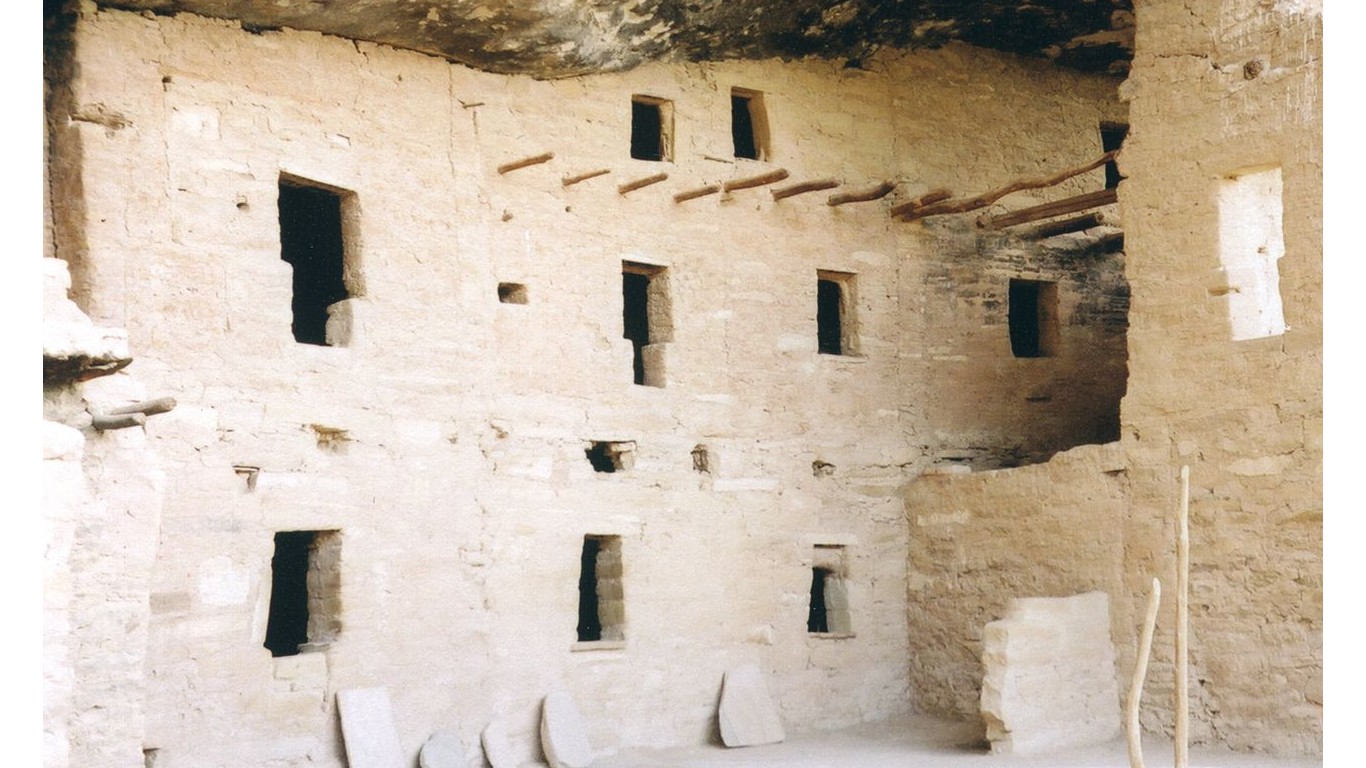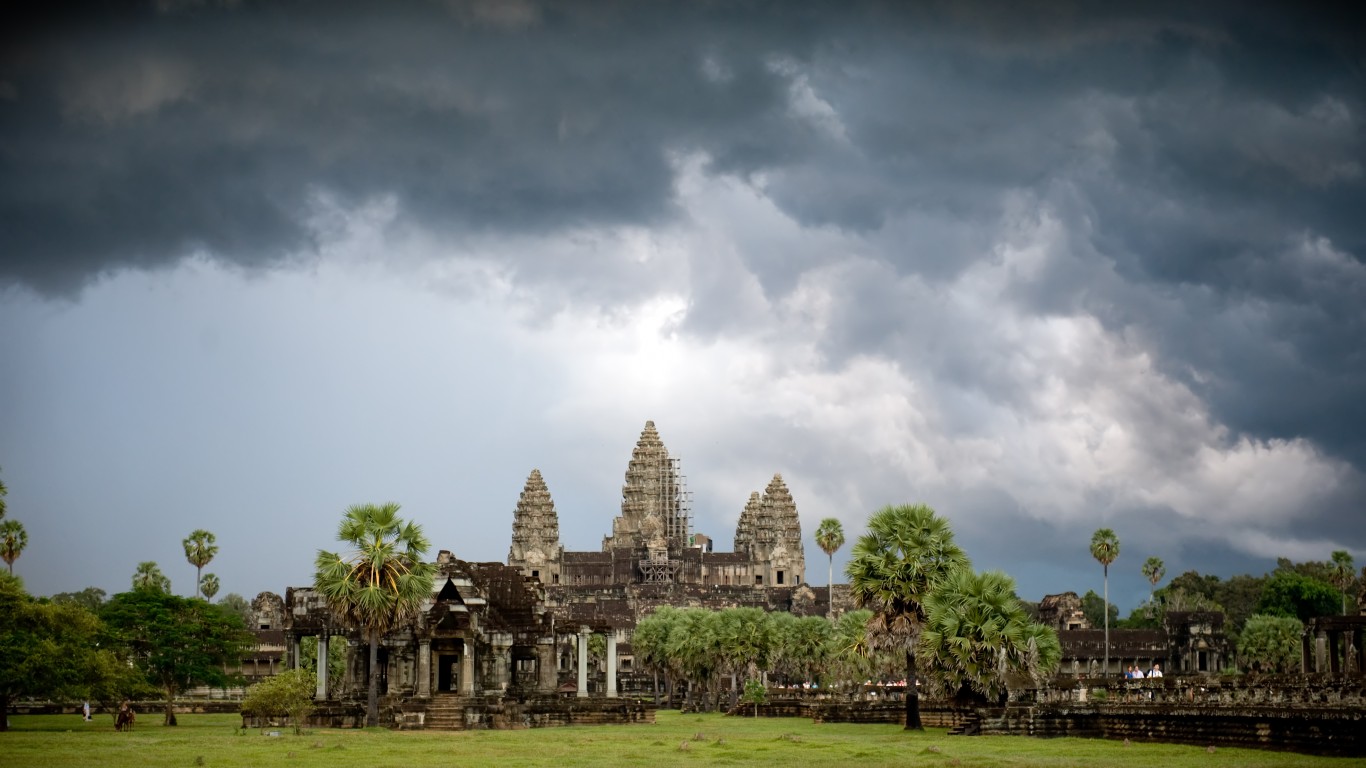
Every year, cities around the world are devastated by natural disasters such as floods, earthquakes, and hurricanes. Although modern technology has given us earthquake-proof buildings, urban flood planning, and radar that can predict the path of dangerous storms, severe damage still occurs as a result of these natural forces. And such extreme events are becoming more frequent and more intense due to climate change. (The U.S. has had its share of catastrophes. Here is the worst natural disaster in every state.)
Ancient civilizations, however advanced they were, often lacked much of the scientific knowledge we have these days about the forces of nature, and many paid the ultimate price for it. 24/7 Tempo has compiled a list of 25 of once-thriving centers of human settlement destroyed or emptied by natural disasters.
Some of these cities’ abilities to sustain a prosperous settlement were weakened gradually by climate-related crop failures, leading to their eventual abandonment or decimation at the hands of invading forces. Others were completely wiped out in the course of a day as a result of tsunamis, volcanic eruptions, or earthquakes. (Here are great cities that came back after being nearly destroyed.)
Click here to see 25 ancient civilizations that were destroyed by natural disasters
Relics of these ancient civilizations remain to this day. Excavations through volcanic sediment, sand, and mud have uncovered intact artifacts from many of them. Underwater exploration has also revealed monuments, buildings, and artifacts from cities that were inundated by the sea. (With sea levels continuing to rise, here are 28 amazing places that could be underwater by 2050.)
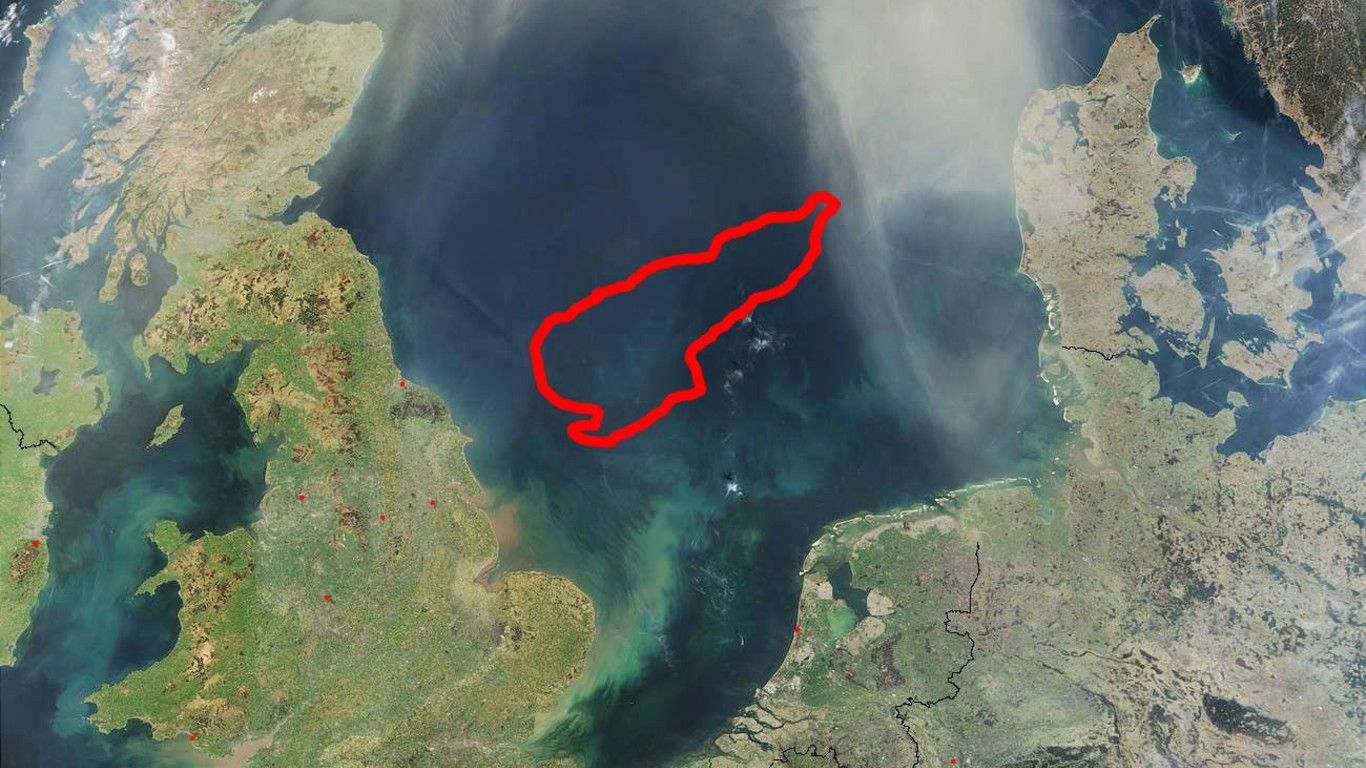
1. Doggerland
> Time period: Approx. 6225-6170 B.C.
Formerly a peninsula, the British Isles were created when melting glaciers at the end of the last ice age flooded the area known as Doggerland, which connected Britain to mainland Europe. The rising sea levels eventually submerged several Mesolithic hunter-gatherer villages. To make matters worse, a massive tsunami caused by the Storegga Slide — a submarine landslide off the coast of Norway — flooded even more coastal areas.
[in-text-ad]
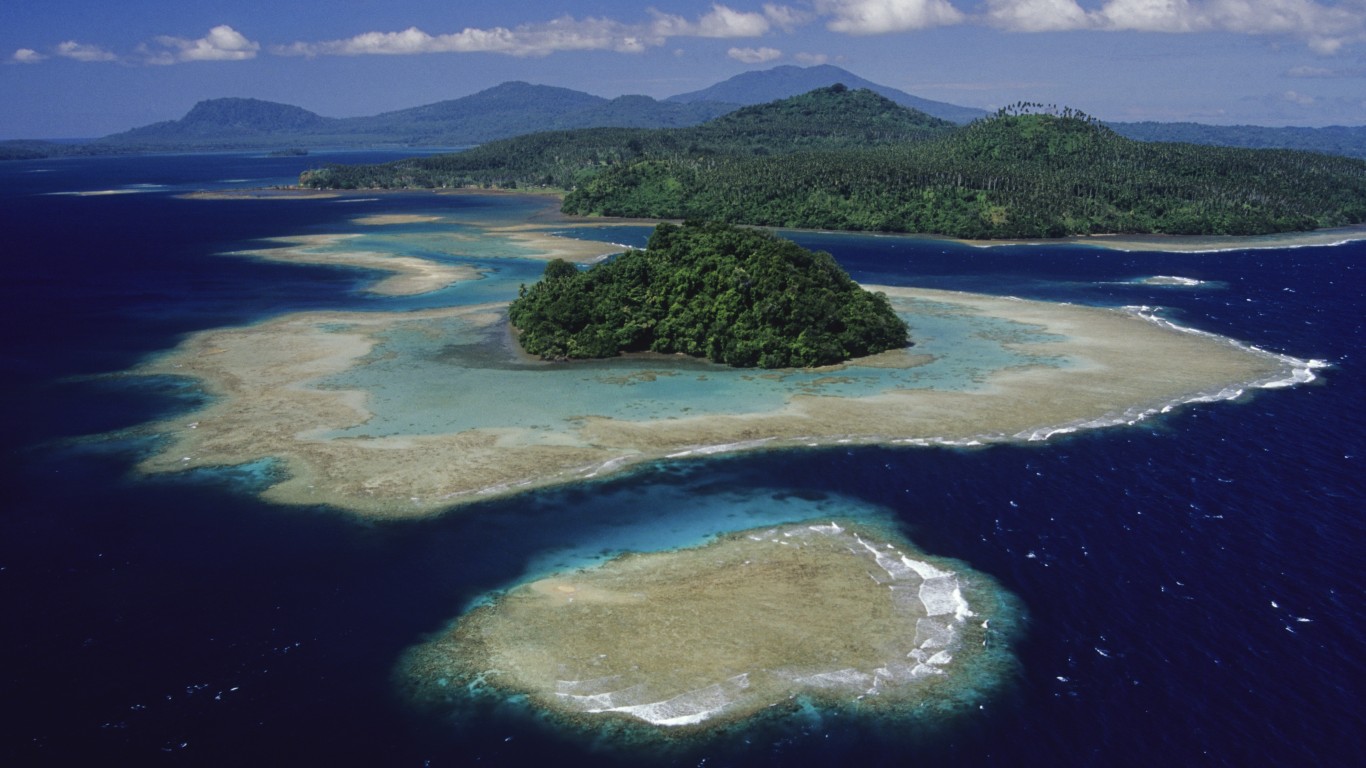
2. Aitape, Papua New Guinea
> Time period: 4000 B.C. (?)
A 6,000-year-old skull found seven miles inland from the Papua New Guinea coast, near the town of Aitape, is believed to be that of the oldest-known tsunami victim in the world. Scientists have found sediment in the area indicative of a destructive giant wave in ancient times. As one of the earliest human remains found on the island, the skull represents an early human habitation that was likely wiped out.
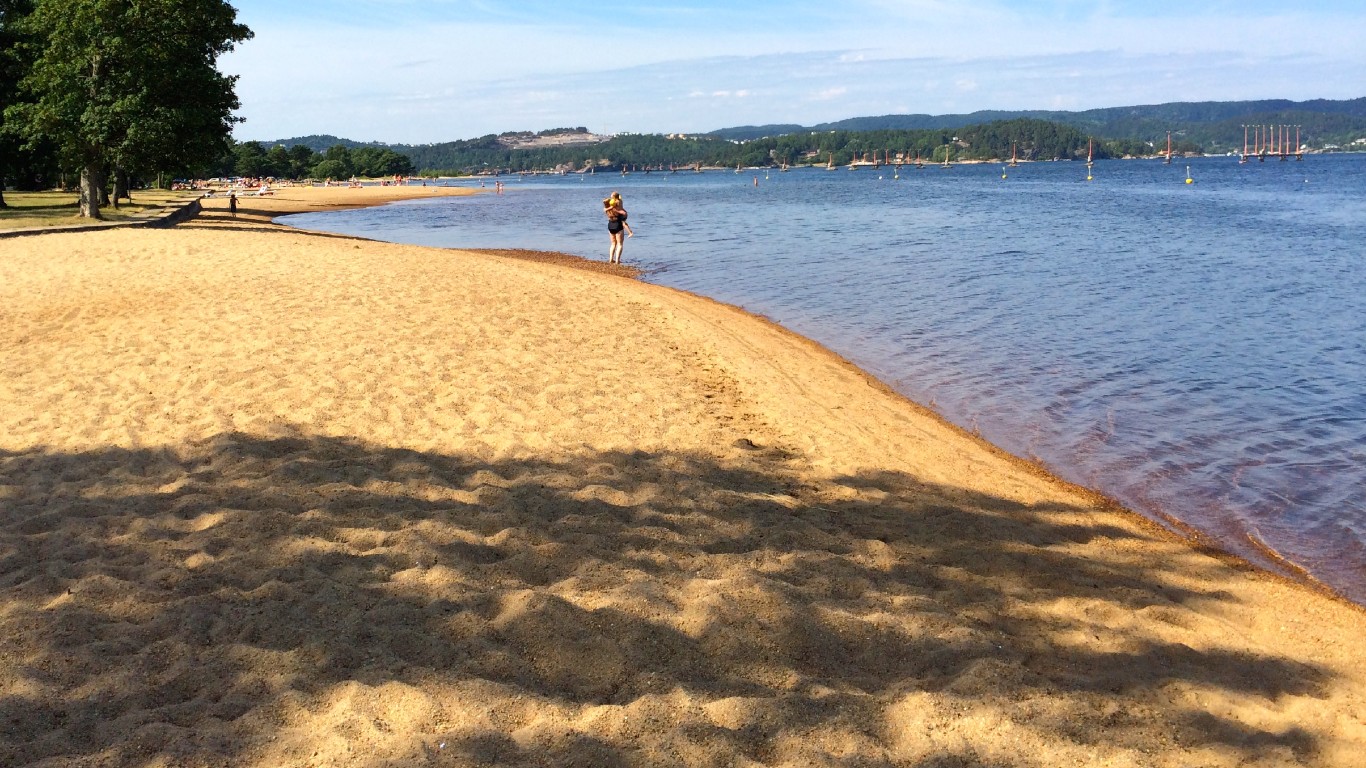
3. Hamresanden, Norway
> Time period: 4000-3600 B.C.
Sometime around 4000 B.C., a Norwegian settlement near what is now the village of Hamre was buried under a thick layer of sand, probably from the flooding of a nearby river. The sand helped preserve weapons, buildings, and some of the only known examples of intact Stone Age pottery in Norway. The prehistoric villagers who once occupied what has been called “a mini-Pompeii” are part of a group that has been dubbed the Funnel Beaker Culture because of the distinct shape of their pottery.
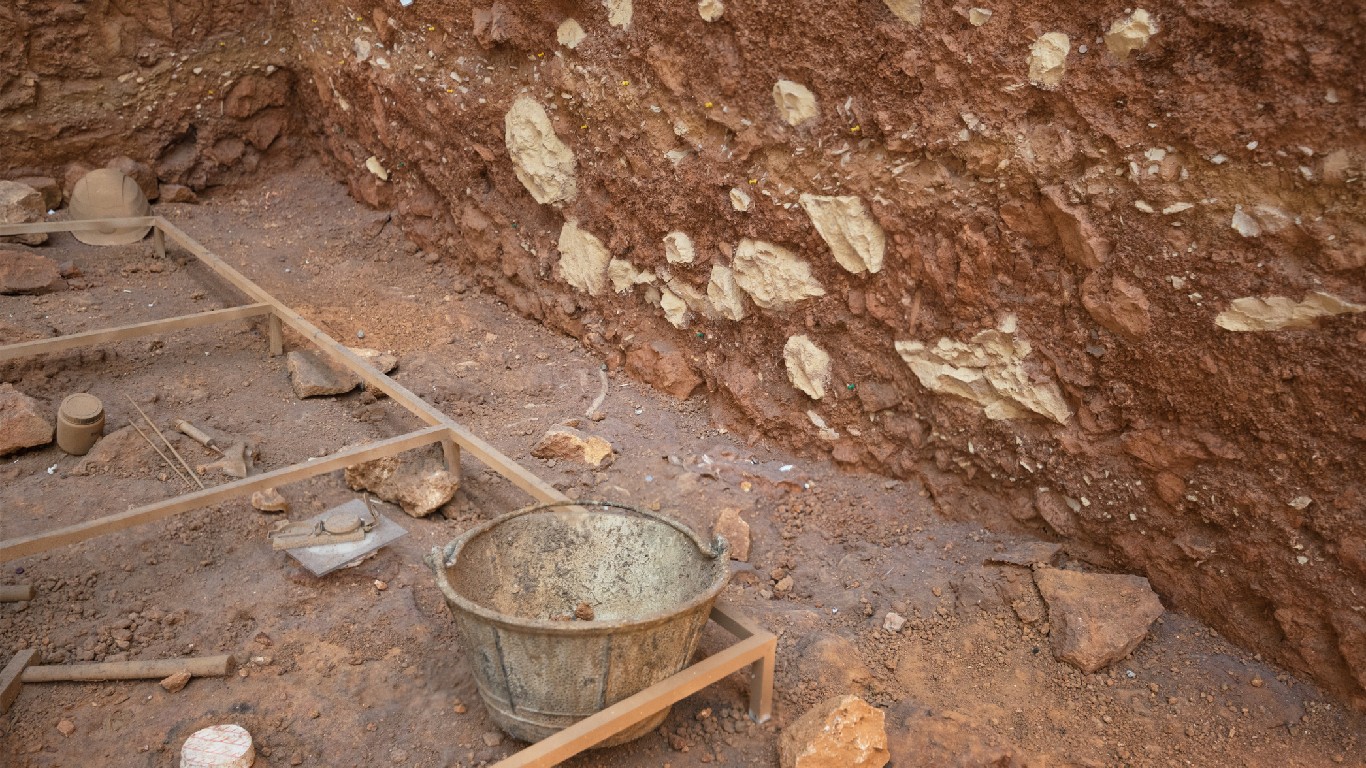
4. Hamin Mangha, China
> Time period: 3000 B.C. (?)
Hamin Mangha, one of the biggest and best-preserved ancient villages in China, holds a captivating mystery. Although the village contains many huts, archaeologists found one that was crammed full of charred skeletons — 97 of them. Scientists believe that an infectious disease was killing villagers faster than they could be buried, so they were stacked in the hut and burned.
[in-text-ad-2]
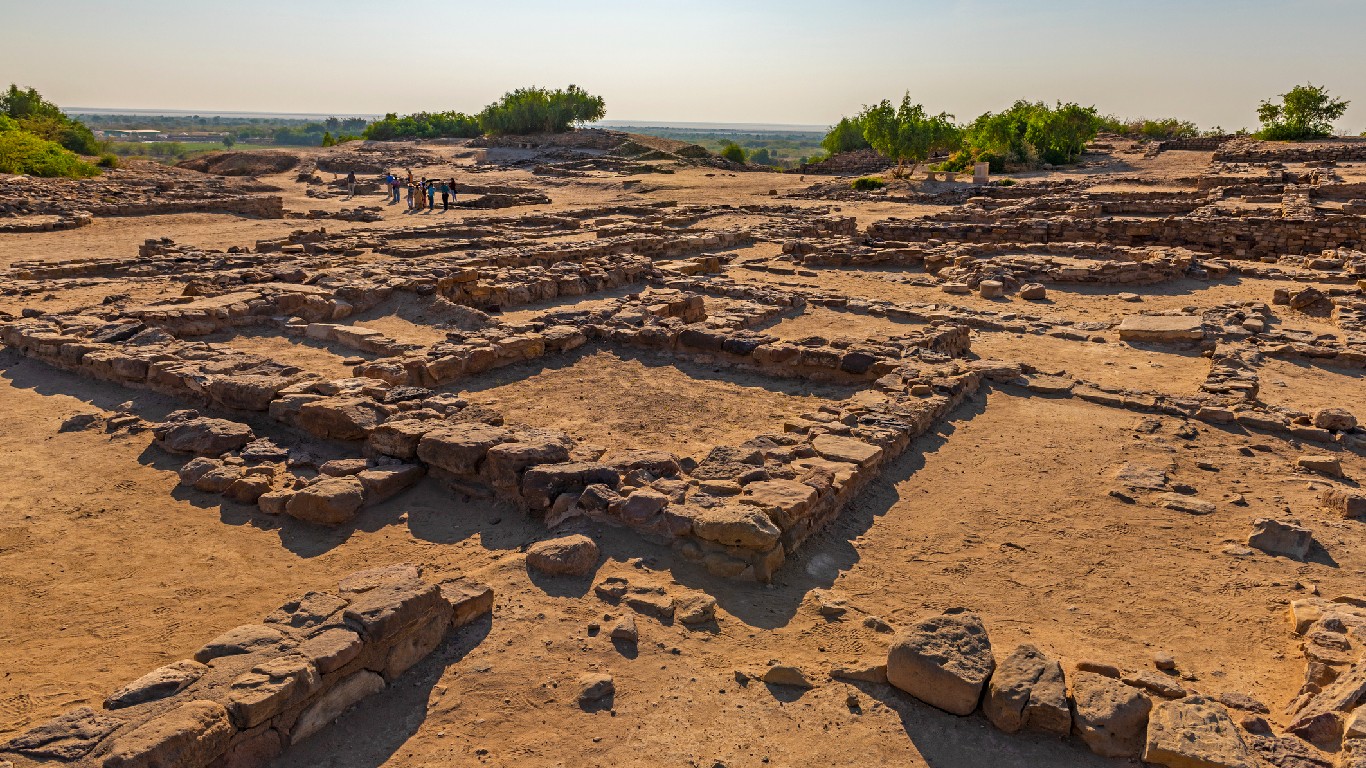
5. Harappan Civilization
> Time period: 2200 – 2000 B.C. (?)
This Bronze Age society in modern-day Pakistan was once an advanced civilization containing two major cities — Mohenjo-daro and Harappa. The cities have been excavated, revealing highly developed water systems and urban planning. Unfortunately, 200 years of drought brought this 5 million-person civilization to ruin.
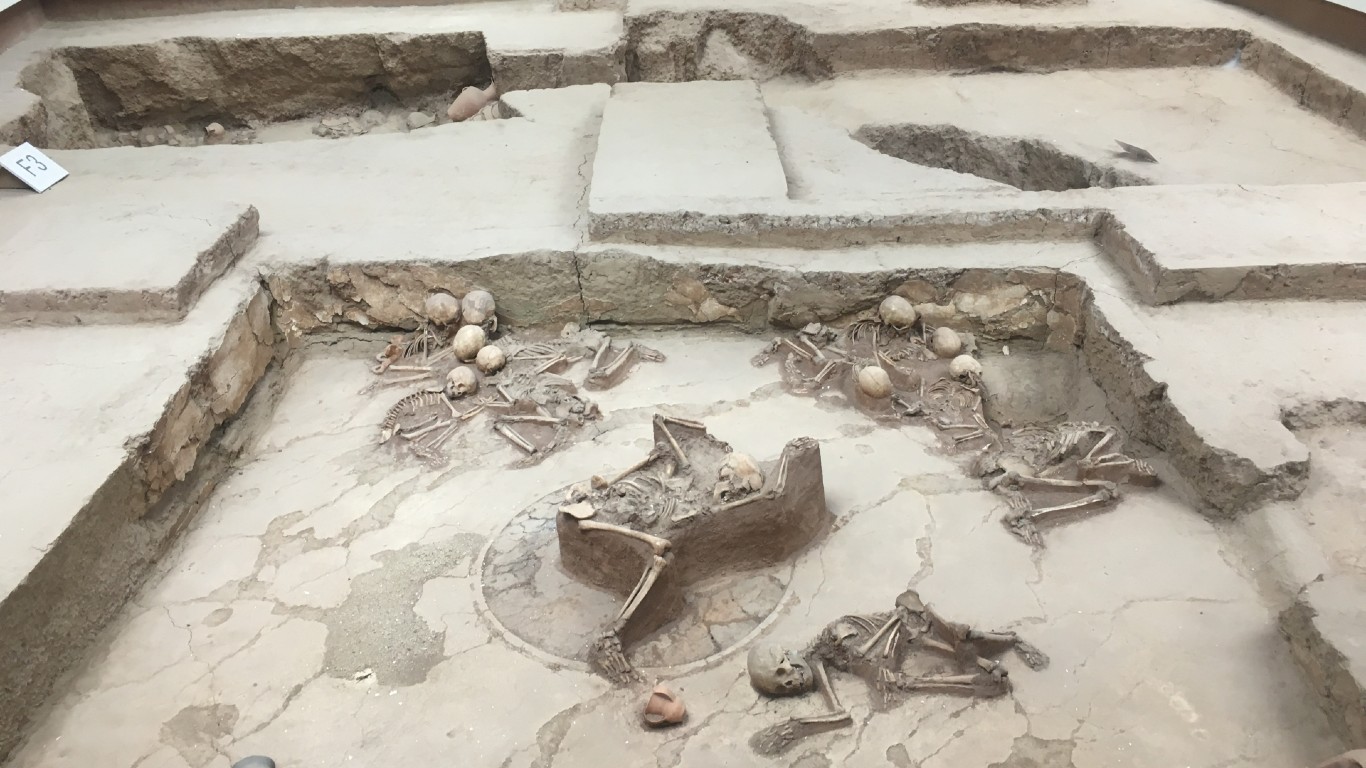
6. Lajia, China
> Time period: 1920 B.C.
Around 4,000 years ago, an earthquake caused massive mudslides that buried villagers along the upper Yellow River. Many preserved skeletons have been discovered at Lajia, the remains of people cowering in their homes, often in protective poses over children. The Lajia site also contains pottery, the remains of domesticated sheep, and the oldest known noodles in the world — made from millet and found inside an overturned bowl.
[in-text-ad]
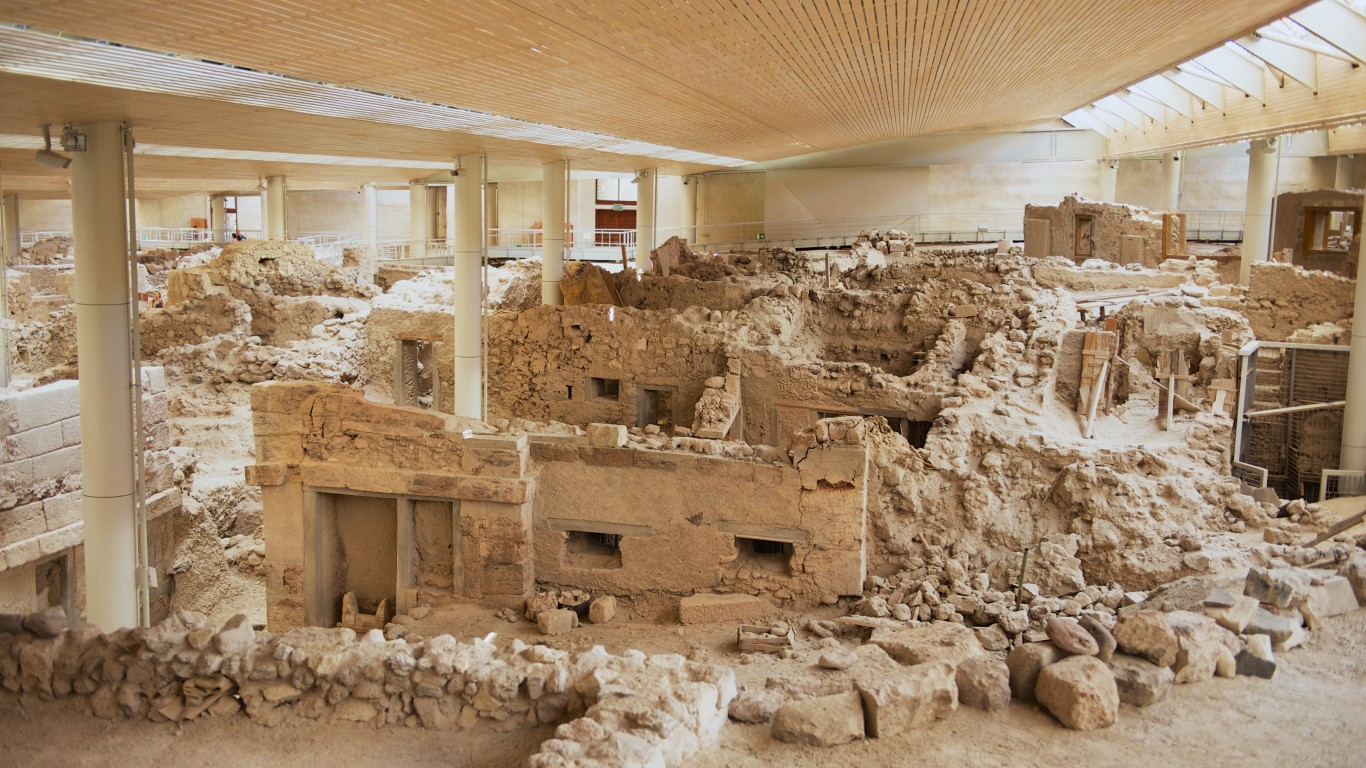
7. Akrotiri, Thera, Greece
> Time period: 1620 B.C.
The island of Thera, now known as Santorini, was once home to a Bronze Age Minoan settlement called Akrotiri. Sometime around 1600 B.C., a volcanic eruption with a Volcanic Explosive Index of 6-7 (greater than that of Vesuvius) buried Akrotiri and formed the bay at the center of the island. Excavation of the site has revealed preserved buildings, art, pottery, and frescoes.
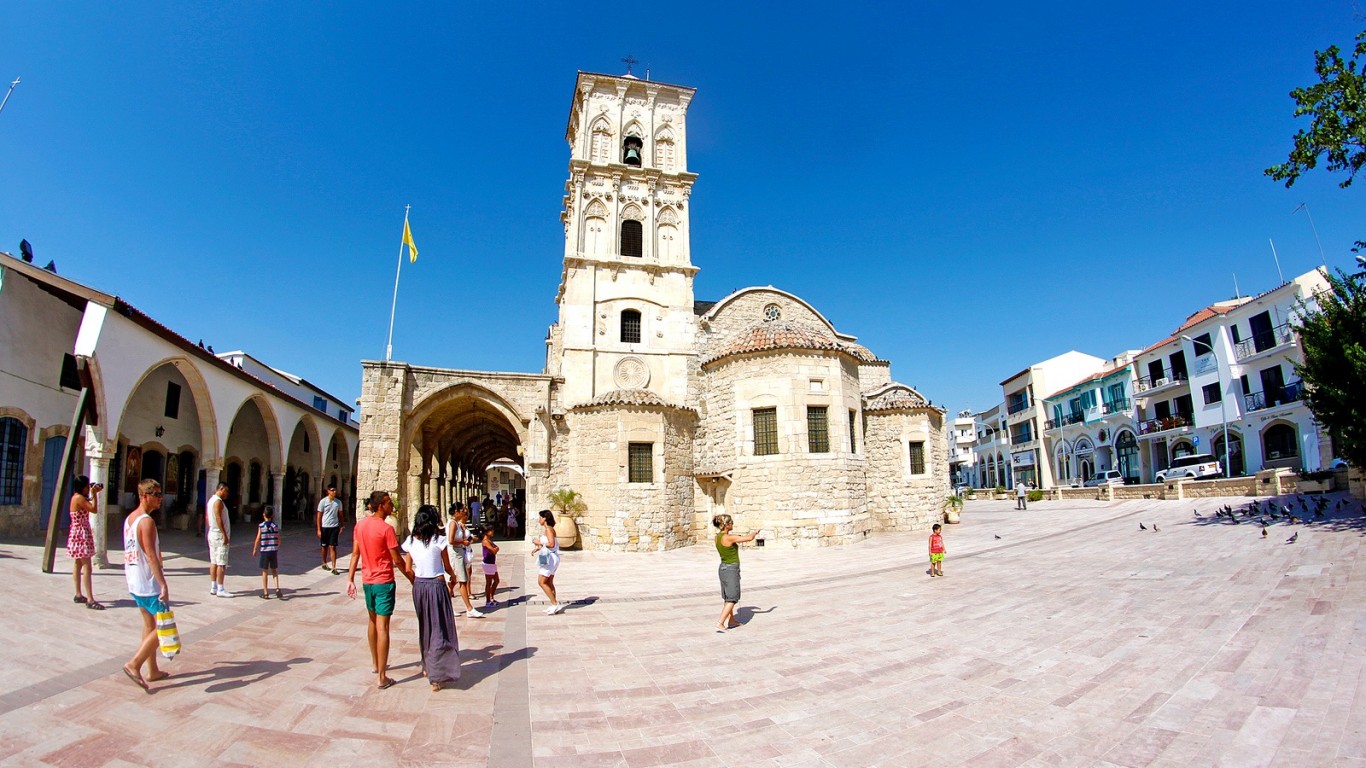
8. Larnaca, Cyprus
> Time period: 1200 B.C.
A victim of the so-called Bronze Age Collapse — a period from about 1250 to 1150 B.C. during which numerous Mediterannean civilizations were destroyed by various causes — the ancient city of Larnaca may have already begun a slow decline due to 300 years of drought. Sedimentary evidence from the city shows a distinct lack of rainfall, which likely led to famine, social and political upheaval, widespread death, and ultimately a massive exodus.
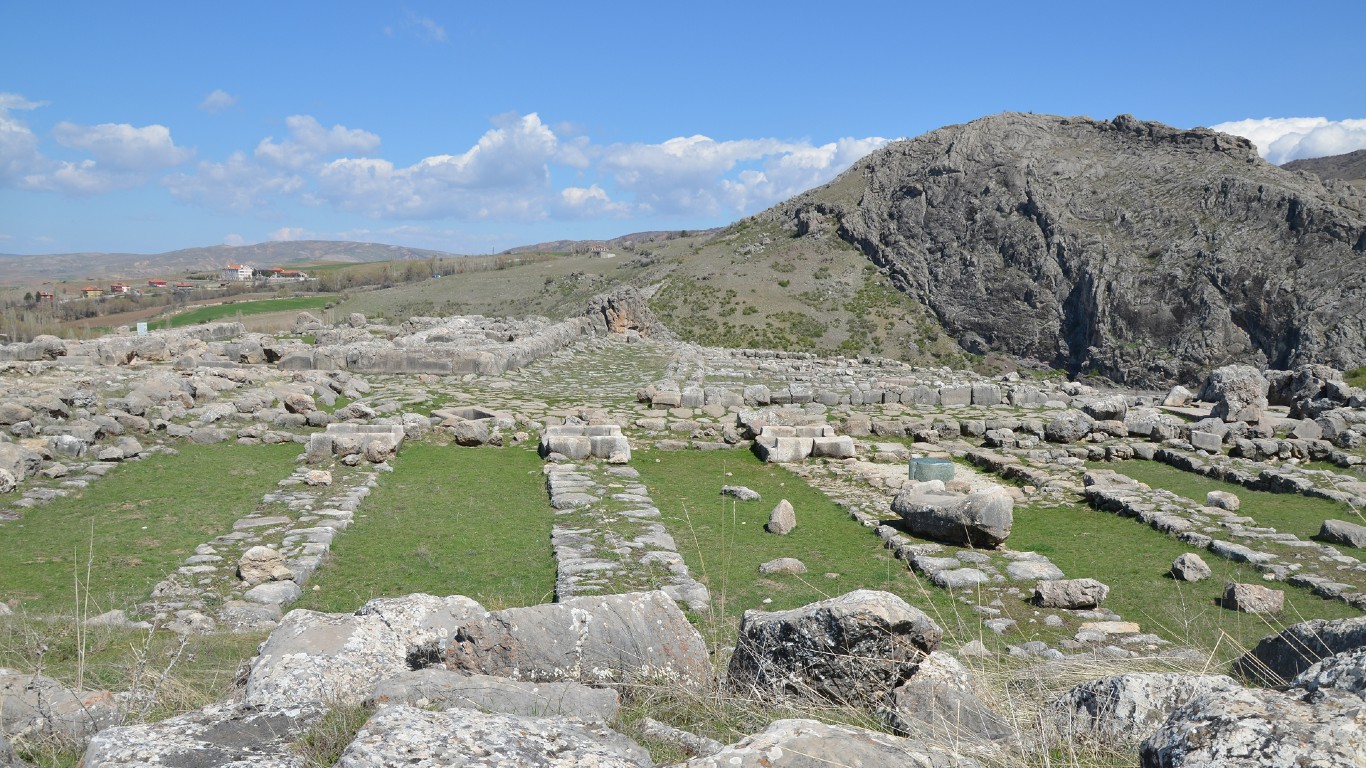
9. The Hittites, Anatolia, Turkey
> Time period: Late Bronze Age
Another victim of the Bronze Age Collapse, the Hittite empire splintered due to climate change involving hundreds of years of drought and a slow drying up of the Mediterranean. The drought likely led to economic crisis, famine, and subsequent social upheaval. Similar declines during the same time period in Mycenaean Greece and New Egypt have been attributed to the same change in climate.
[in-text-ad-2]
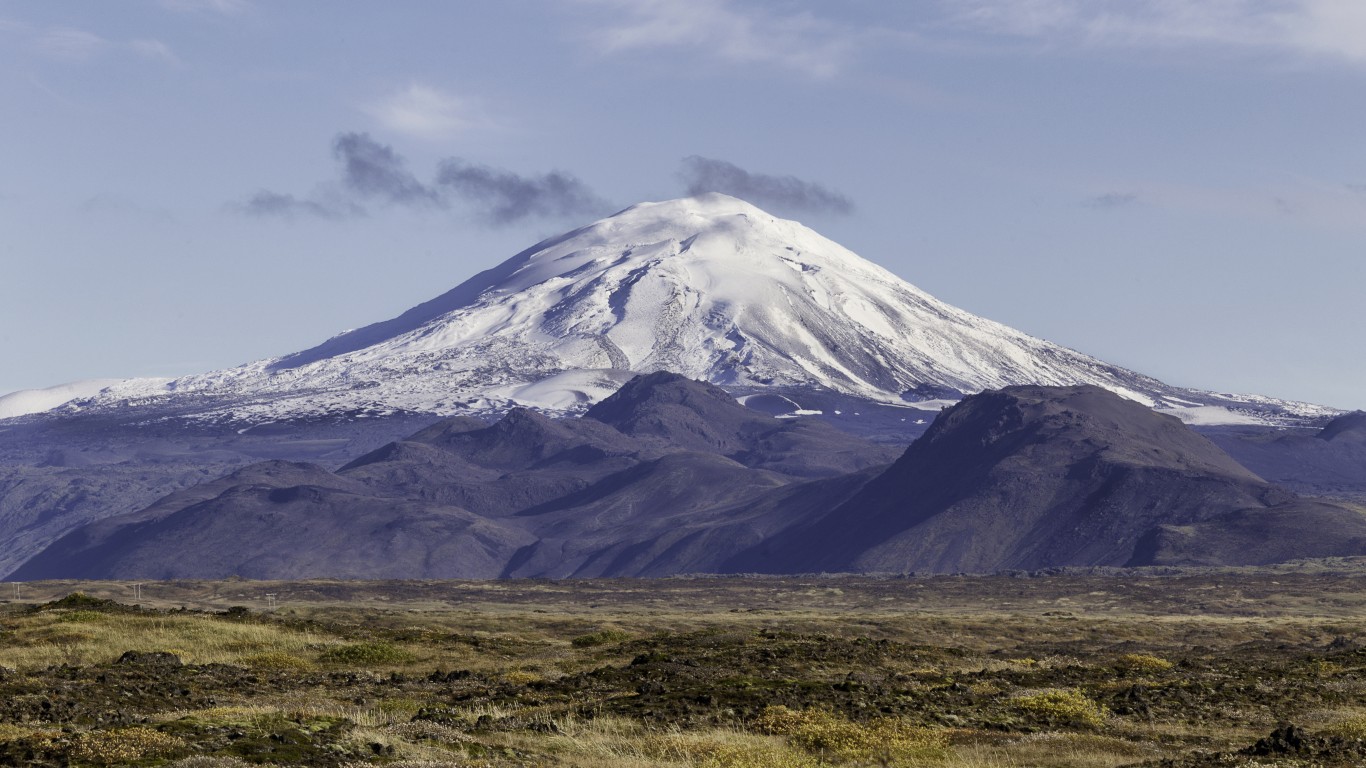
10. New Kingdom of Egypt
> Time period: 1100 B.C.
What does an Icelandic volcano have to do with the Bronze Age Collapse of the Egyptian Empire? Some Egyptologists blame a cataclysmic eruption of Iceland’s Hekla volcano — which spewed so much rock into the atmosphere that the Earth experienced years of cooling afterward — for the climate change and widespread famines that led to the decline of Egypt under Ramesses III.
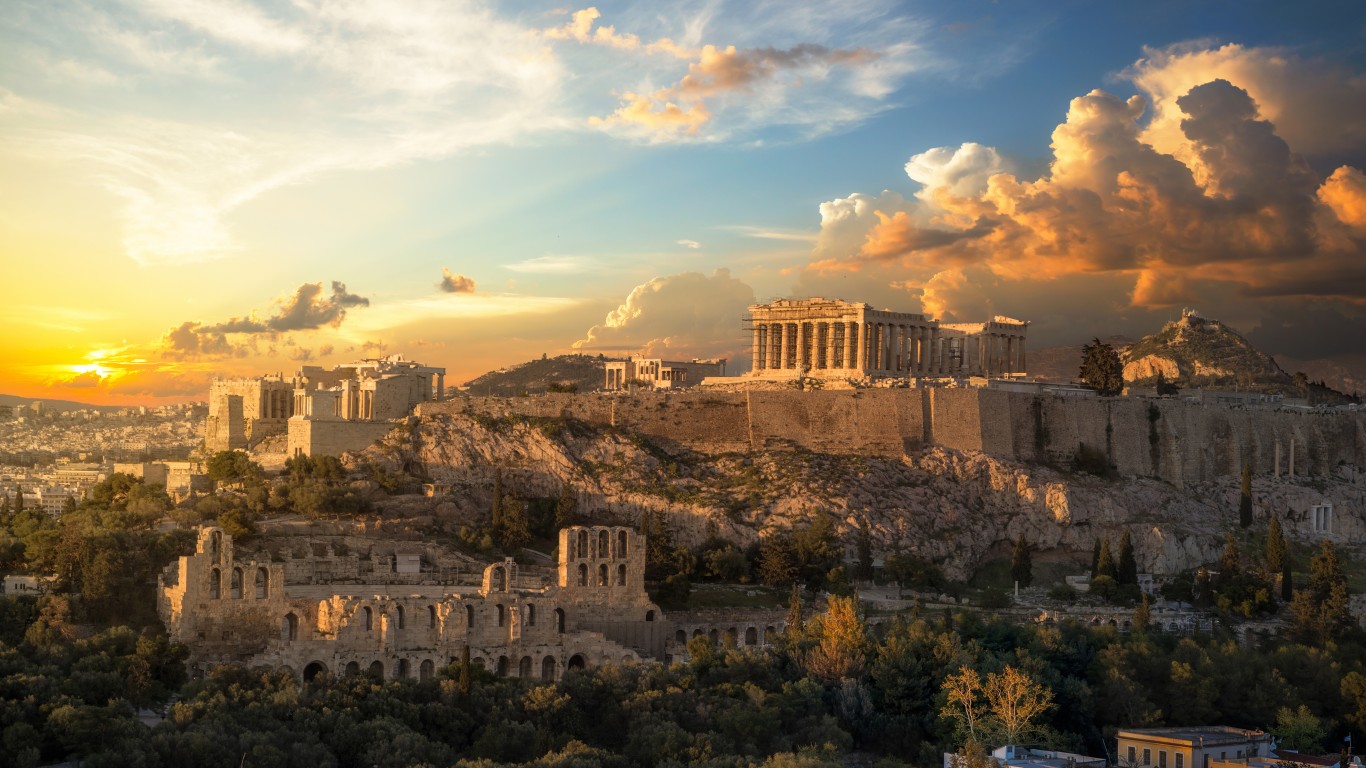
11. Athens, Greece
> Time period: 430 B.C.
A fifth-century disease outbreak ravaged the people of Athens for five years. Victims suffered from fever, vomiting, ulcers, diarrhea, and bleeding from the mouth. Some theories point to Ebola as the probable cause of the epidemic that killed a quarter of the population of Athens and signaled the end of the Golden Age of Greece.
[in-text-ad]
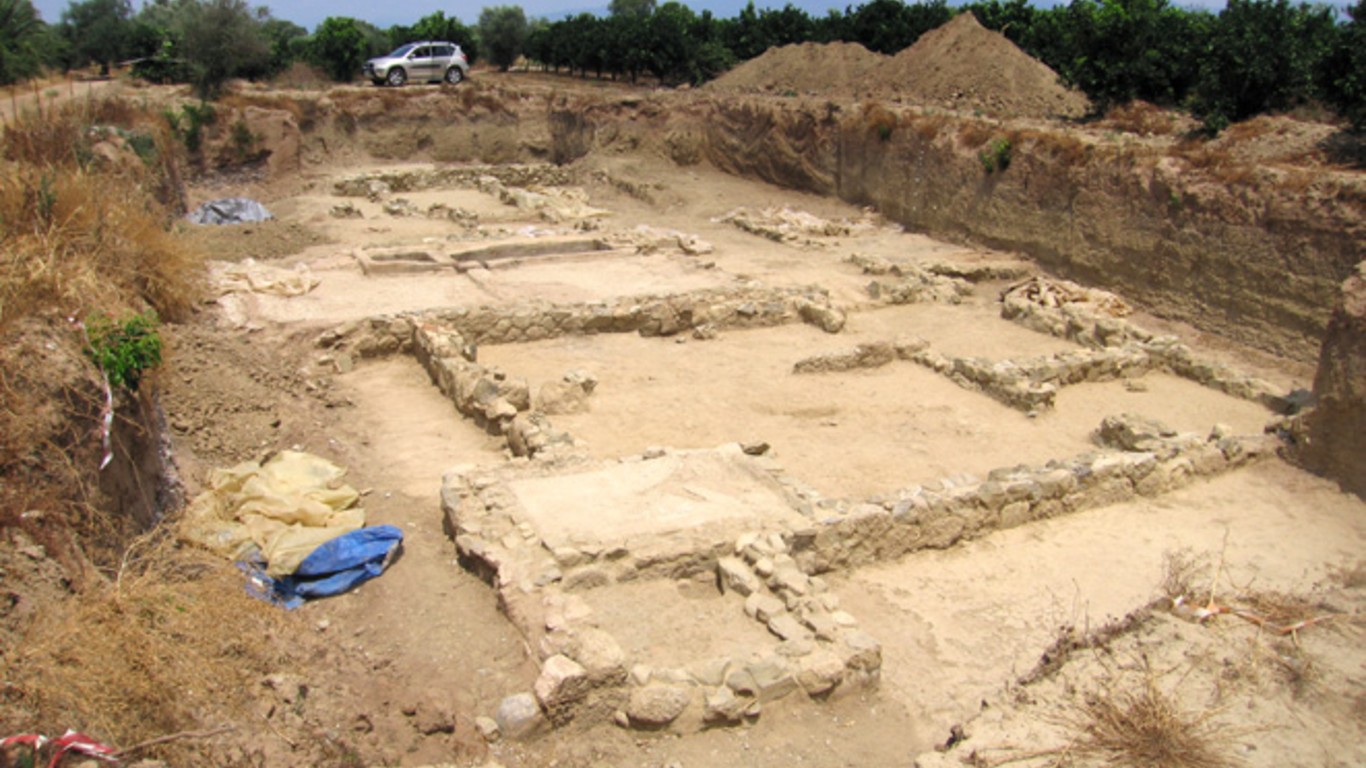
12. Helike, Greece
> Time period: 373 B.C.
The ancient Peloponnese city of Helike was demolished in a single night by a tsunami, which submerged the whole city and its populace. A few days prior, animals and birds fled the coast, and some residents recorded seeing earthquake light — columns of flames that sometimes appear during tectonic activity.
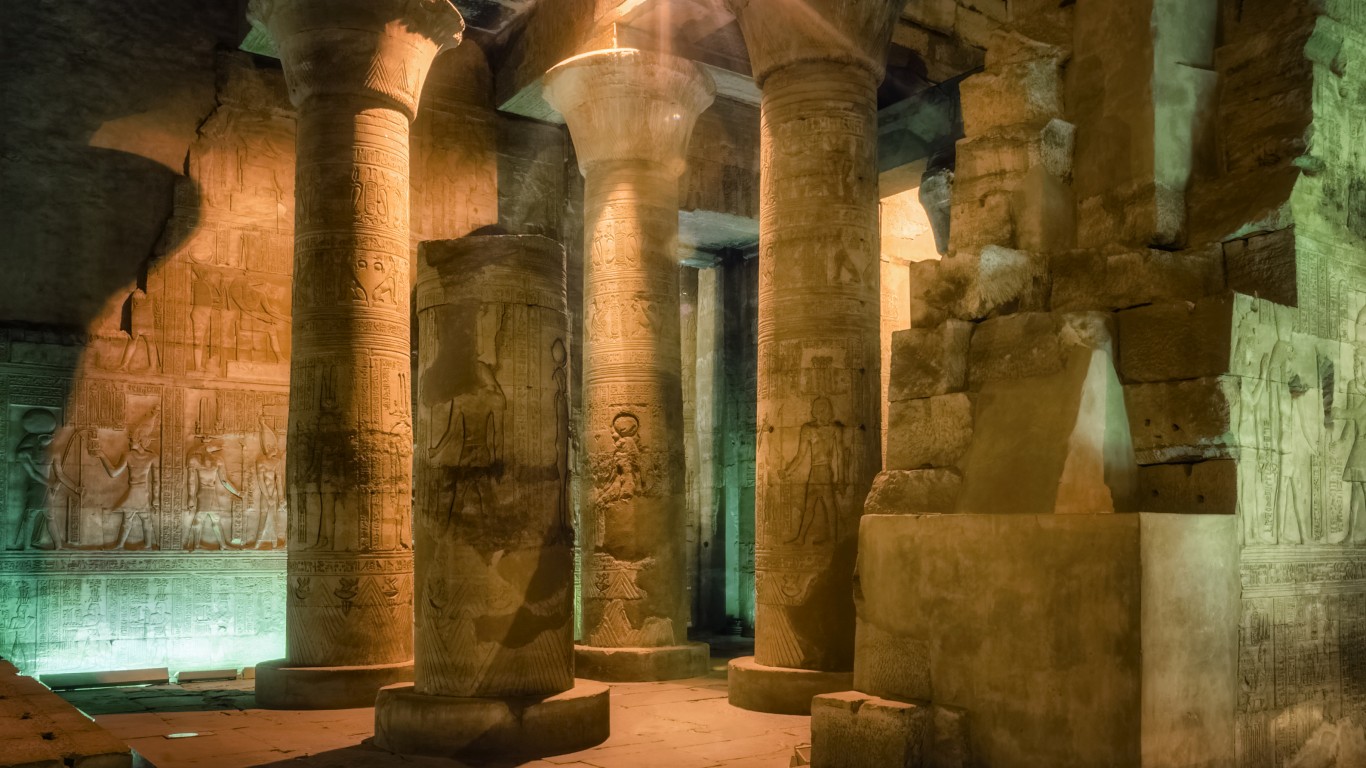
13. Ptolemaic Dynasty, Egypt
> Time period: 305-30 B.C.
During the Ptolemaic dynasty, leading up to the Roman conquest of Egypt, droughts and crop shortages led to famines and revolts, making Egypt an easy target for invaders. Modern scientists have traced the crop failures to the decline in the usual yearly monsoons, which were like the result of multiple volcanic eruptions in Greenland and Antarctica. These eruptions were powerful enough to block the sun and affect the atmosphere over Egypt.
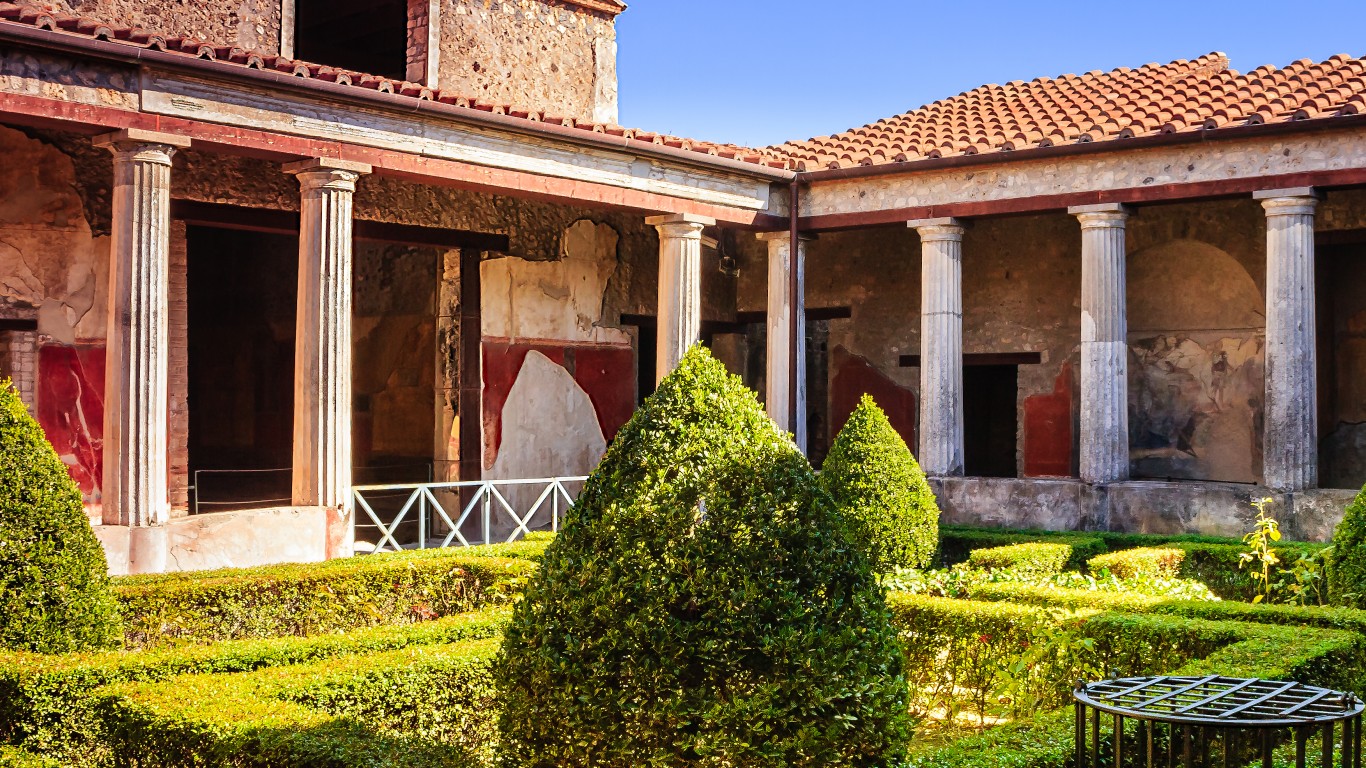
14. Pompeii, Italy
> Time period: 79 A.D.
An advanced Roman port city of 11,000 inhabitants, Pompeii began to experience seismic activity in 79 A.D., including massive earthquakes and poisonous gasses leaking from the ground. A few days later, nearby Mount Vesuvius erupted, killing a majority of the city’s inhabitants. Those who didn’t escape died the next day, when the volcano erupted again, this time with an even more powerful wave of heat.
[in-text-ad-2]
15. Herculaneum, Italy
> Time period: 79 A.D.
The seaside town of Herculaneum was a posh retreat for wealthy Romans. It largely escaped damage during the first eruption of Vesuvius that devastated Pompeii, and some inhabitants and visitors were able to evacuate. Unfortunately, heat and pyroclastic flow from the second blast killed all survivors, many of whom have been found on the coastline in boathouses, possibly waiting for vessels to save them.
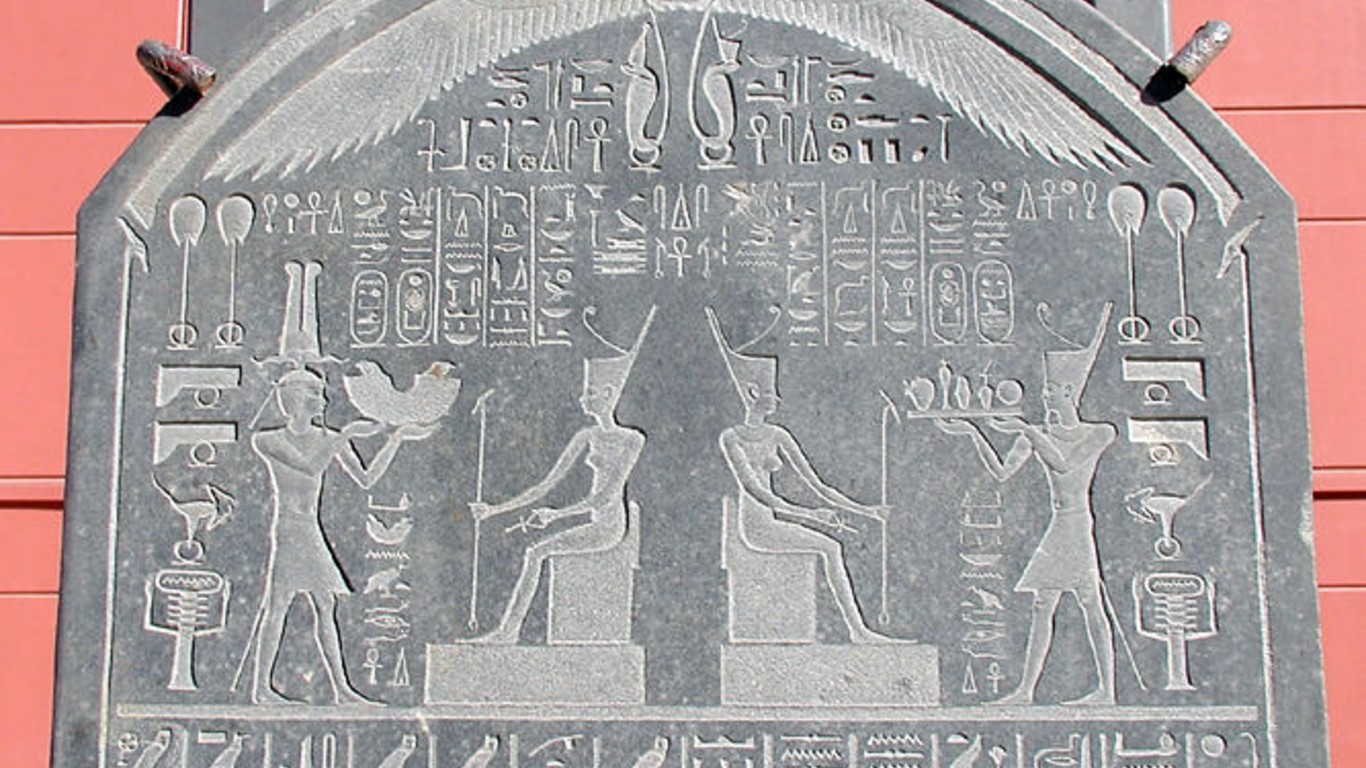
16. Thonis, Egypt
> Time period: 2nd century B.C.
A bustling trade center, the port town of Thonis was built on sandy clay soil. When a series of earthquakes began to strike the area in the second century B.C., a process known as soil liquefaction turned the ground under the city to liquid, and Thonis, with its massive stone buildings, began to sink into the sea. It was a gradual process, but by the eighth century, the city was completely underwater.
[in-text-ad]
17. Neapolis, Tunisia
> Time period: 365
On the site of the modern-day city of Nabeul, an ancient Roman city called Neapolis once stood until it was demolished by an earthquake-triggered tsunami. Left undiscovered for 1,700 years, the ruins of Neapolis were found in 2017. Among the ruins were a hundred tanks used to produce the fermented fish sauce called garum that was popular in Roman times, suggesting that the city was a major producer of the condiment.
18. Eleutherna, Crete
> Time period: 365
Eleutherna was a prosperous city on the Greek island of Crete until it was destroyed by the same earthquake that sank Neapolis. Excavations of the site have uncovered a Christian basilica, a burial ground dating back to 850 B.C., a Hellenistic bridge, and a well-intact lavish villa containing ivory chests, jewelry, a banquet hall, and the probable remains of the wealthy couple who lived there, huddled around their young son.
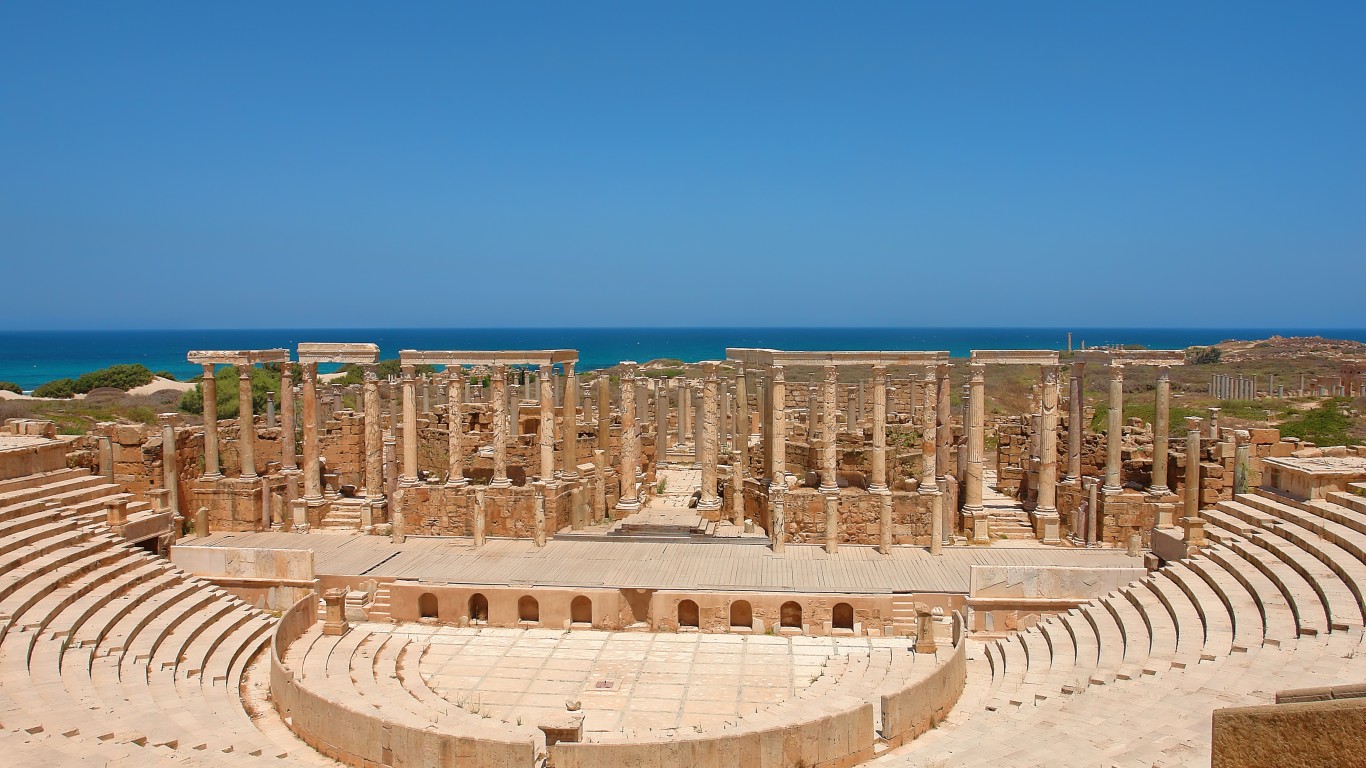
19. Leptis Magna, Libya
> Time period: 647
Once a thriving Roman city in modern-day Libya, Leptis Magna fell to the Vandals in 439, was raided by the Berbers in 528, and finally taken by the Arabs in 647. Although multiple invasions were the cause of the city’s decline and subsequent abandonment, the fate of Leptis Magna was left to the desert sands, which completely buried the remains of the city. Having been excavated, the ruins are now one of the best preserved Roman sites in the Mediterranean.
[in-text-ad-2]
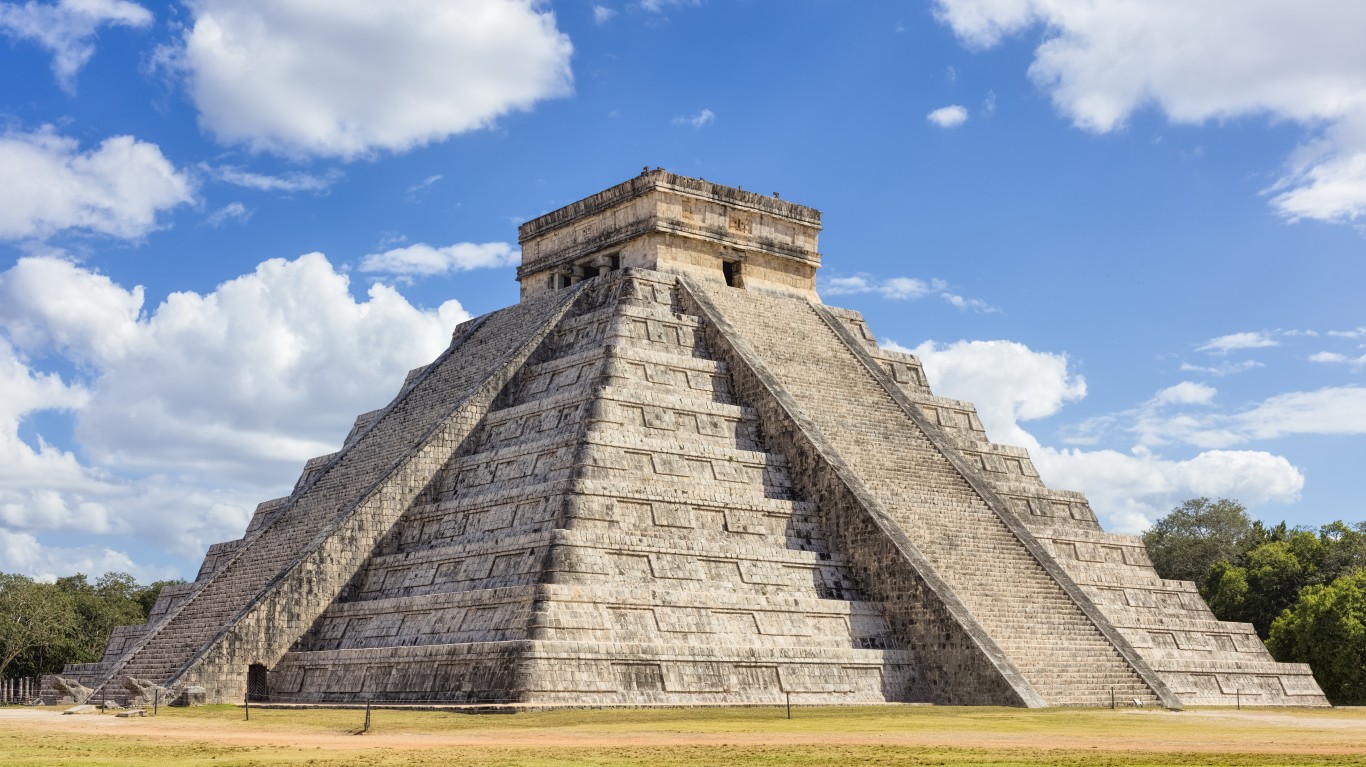
20. Mayan Civilization
> Time period: Began 800
Spanning what is now Central America and Mexico, the Mayan empire was once an advanced civilization, boasting technological feats, including a calendar system, mathematics, advanced agricultural practices, and urban planning. Although the cause of the Mayan decline is debated, many scientists attribute it to a drought that spanned two centuries, coinciding with the abandonment of many Mayan cities.
21. Tikal, Guatemala
> Time period: 950
Once one of the great Mayan cities, Tikal, which was likely called Yax Mutal during its time, is now a ruin in the Guatemalan rainforest, abandoned during the collapse of many other Mayan societies. Evidence suggests that the city was suffering from soil erosion caused by deforestation, as well as toxic contamination of the water supply by mercury, cyanobacteria, and phosphates, which likely led to rapid population decline.
[in-text-ad]
22. Tiwanaku, Bolivia
> Time period: 1,000
Although the original name of this pre-Columbian city has been lost as its inhabitants had no written language, the ancient city called Tiwanaku was likely inhabited around 300 B.C., with its population peaking at 10,000 around 800 A.D. Climate change and drought probably caused the decline of the city, forcing its people to flee.
23. Ancestral Puebloans, Mesa Verde
> Time period: 1300
The cliff dwellings at Mesa Verde are some of the largest and best preserved cliff dwellings in the United States. Inhabited by various cultures for thousands of years, the area eventually became home to the Ancestral Puebloans. They inhabited the cliffs until the end of the 13th century, when a series of prolonged droughts forced them to leave the area.
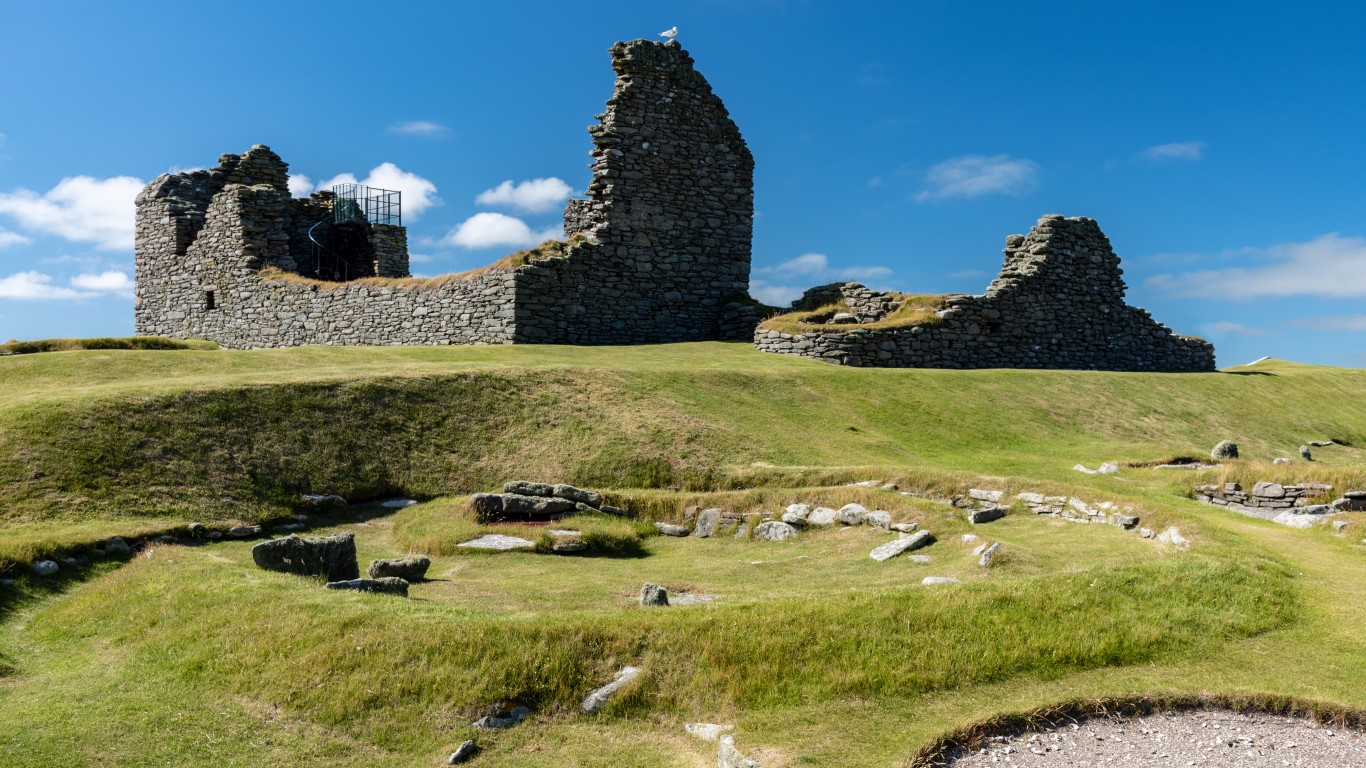
24. Norse Vikings, Greenland
> Time period: 14th and 15th centuries
Norse Vikings settled in Greenland during a particularly warm period in history from 800 to 1200 A.D. During this time, settlements likely thrived due to the relative ease of agriculture. Unfortunately, the warm days were numbered, and the “Little Ice Age” of the 14th and 15th centuries caused the Vikings to abandon their settlements on the frigid island.
[in-text-ad-2]
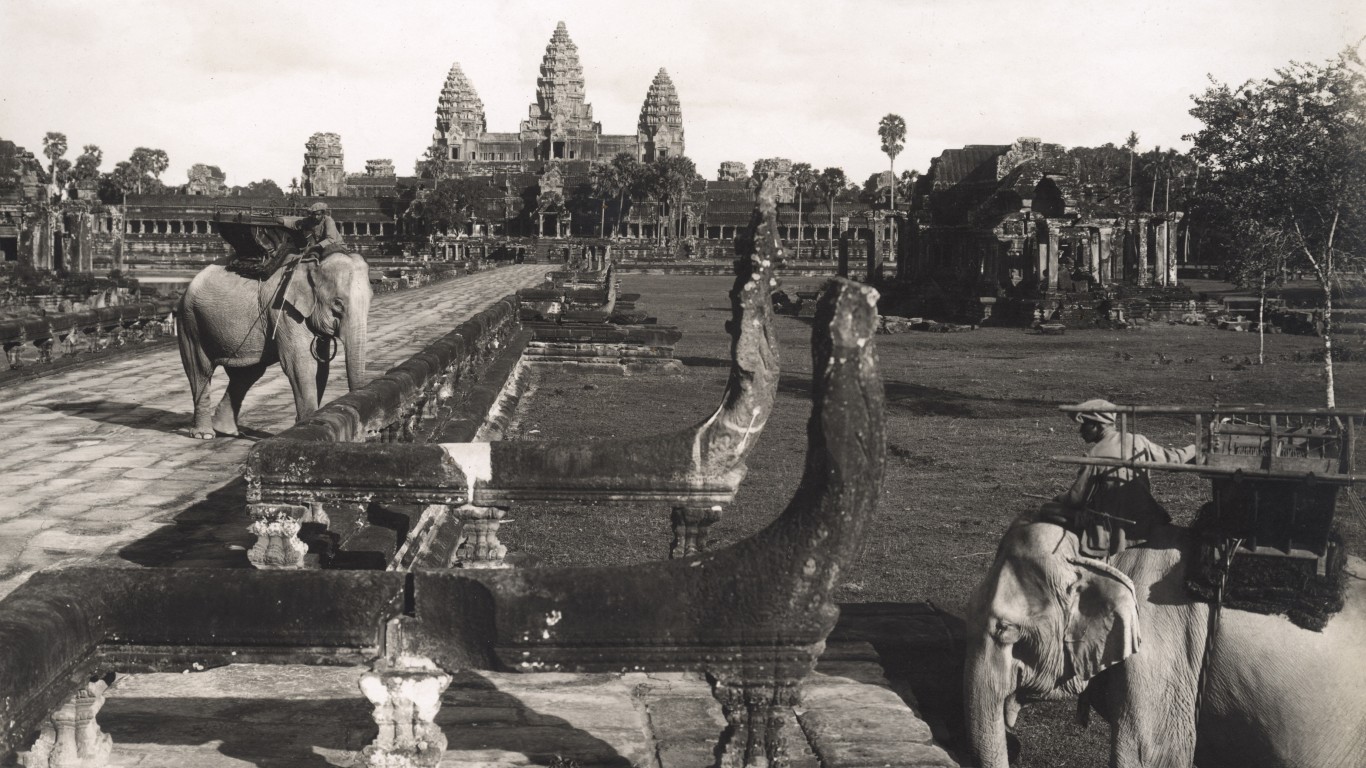
25. Angkor, Cambodia
> Time period: 15th century
Beginning in the ninth century A.D., Angkor was the capital city of the Khmer empire of Cambodia. The wealthy civilization was known for its art, ornate architecture, and advanced waterways. Its sophisticated water system was no match for climate change, however, which brought periods of extreme drought and flooding in the 15th century, contributing to the abandonment of the once-great city.
Thank you for reading! Have some feedback for us?
Contact the 24/7 Wall St. editorial team.
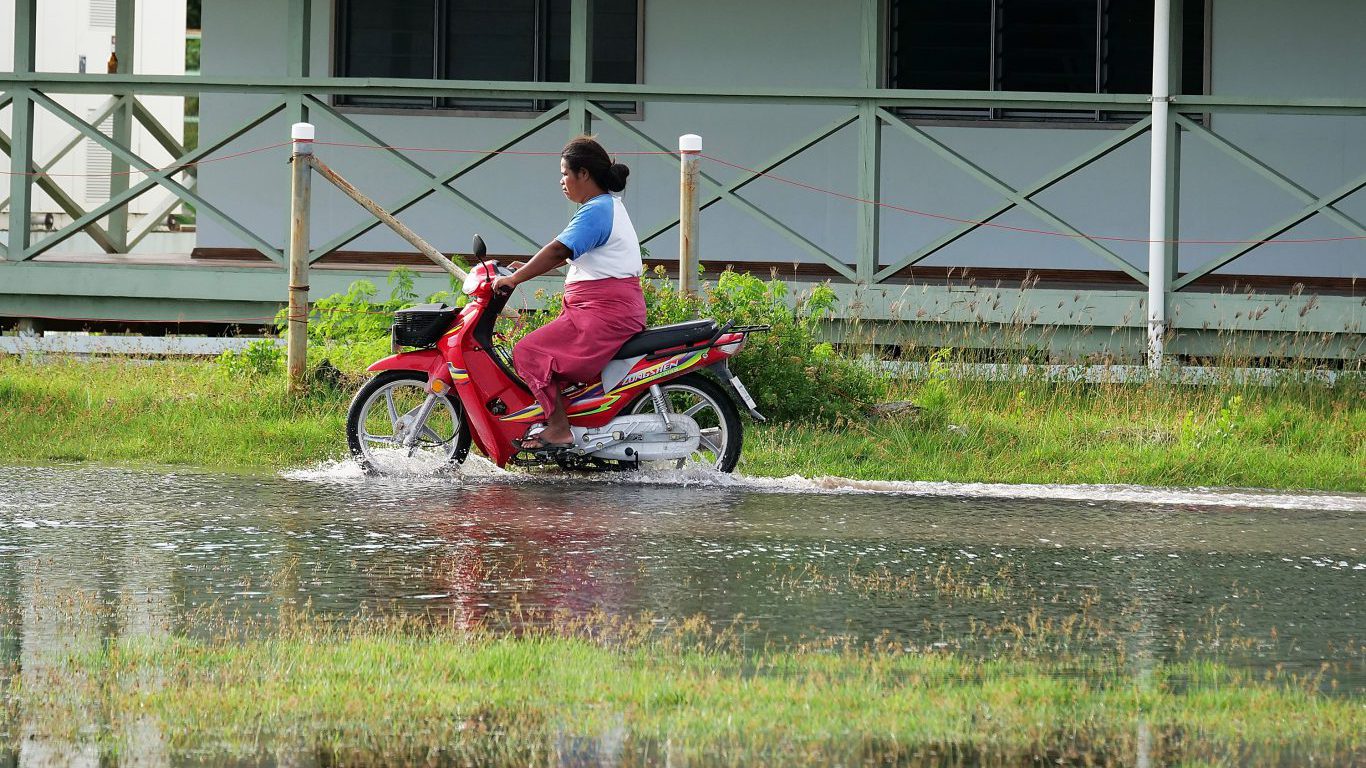 24/7 Wall St.
24/7 Wall St. 24/7 Wall St.
24/7 Wall St.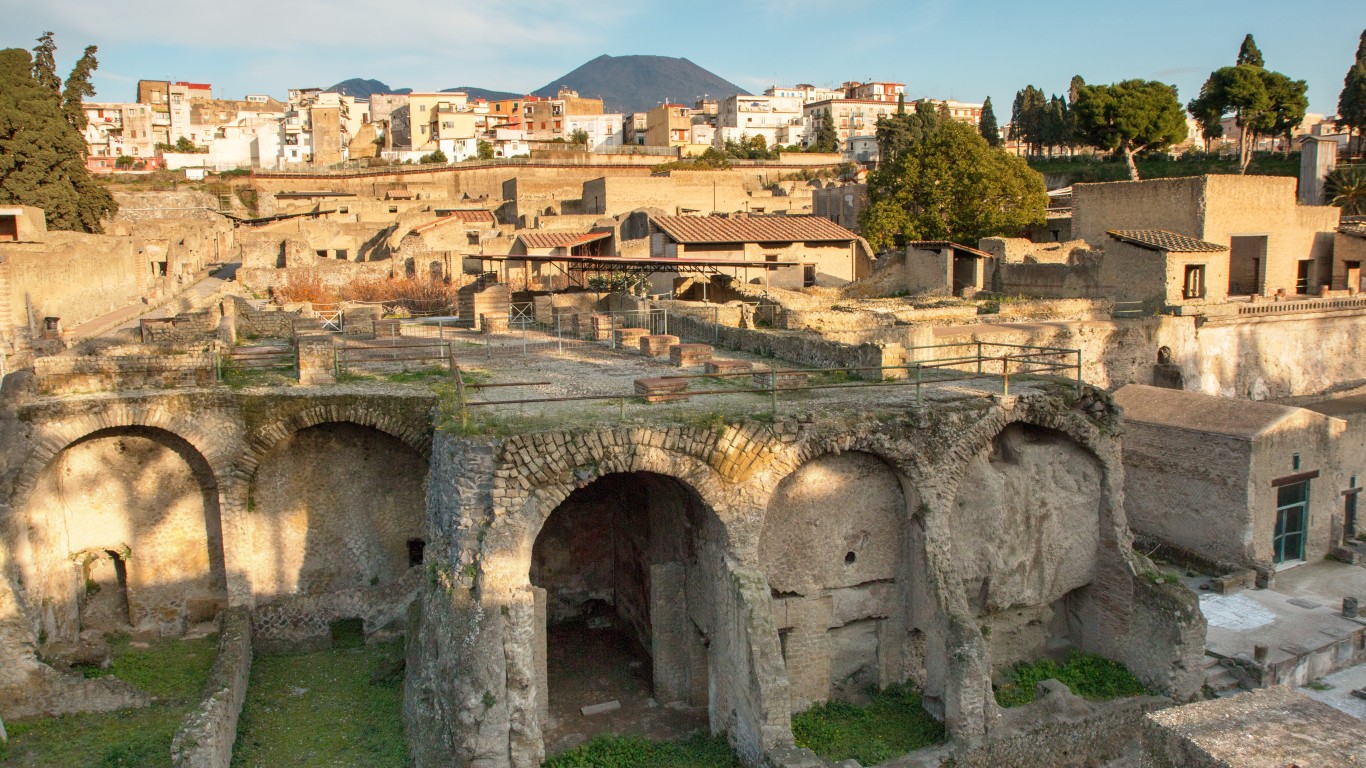
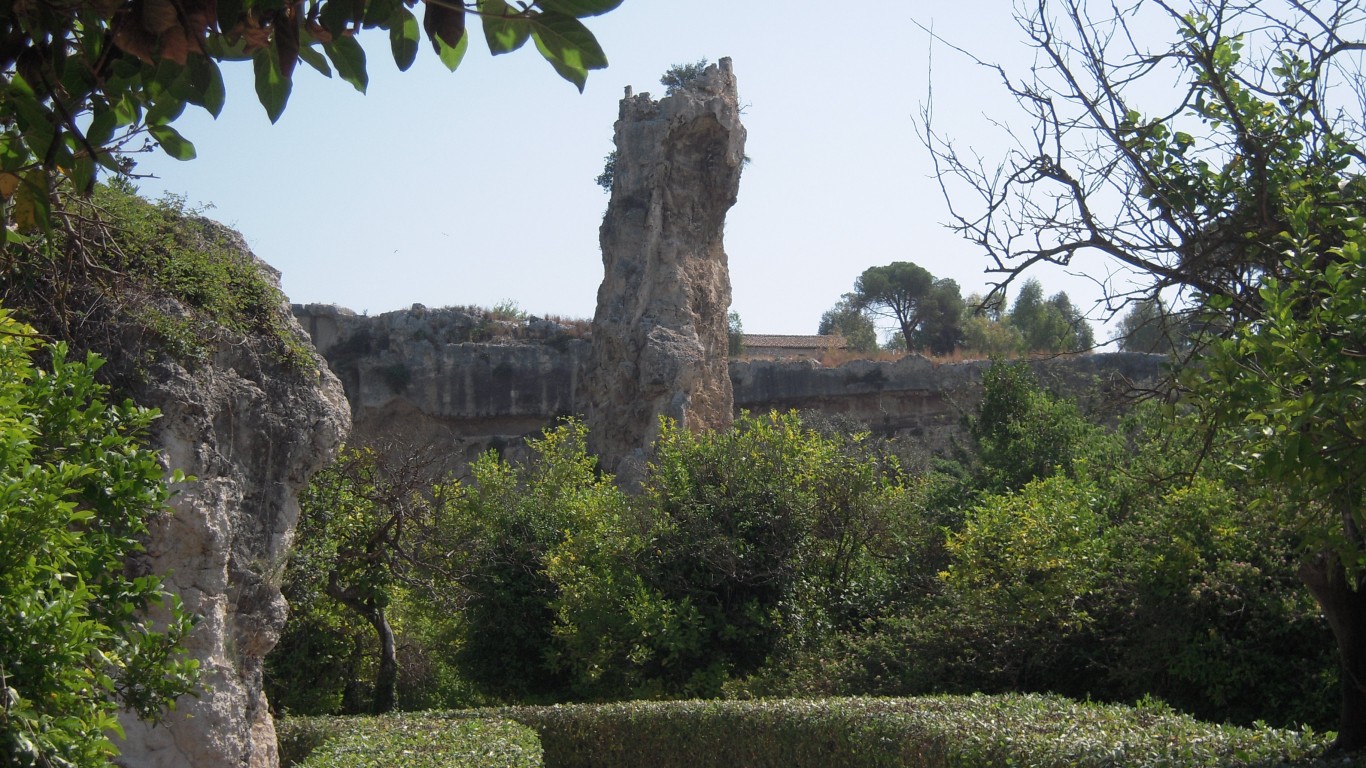
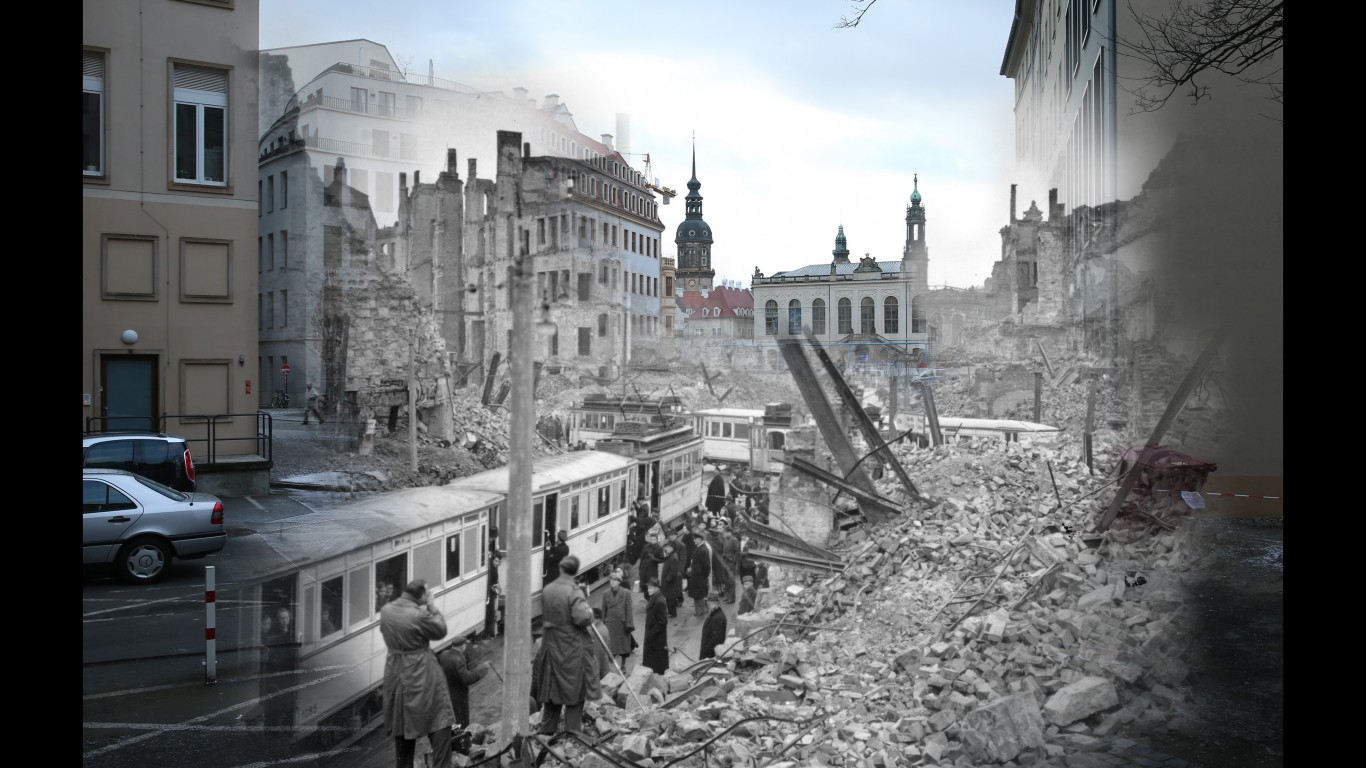 24/7 Wall St.
24/7 Wall St.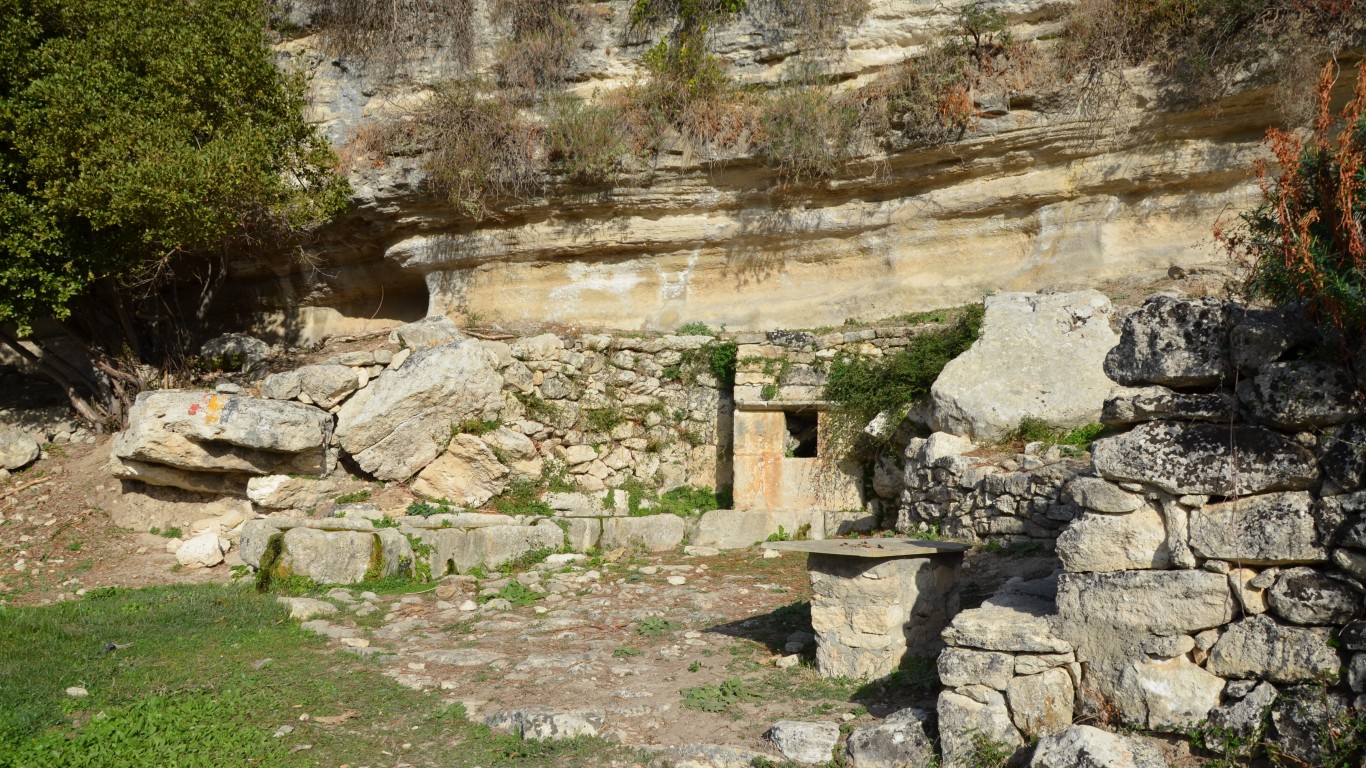
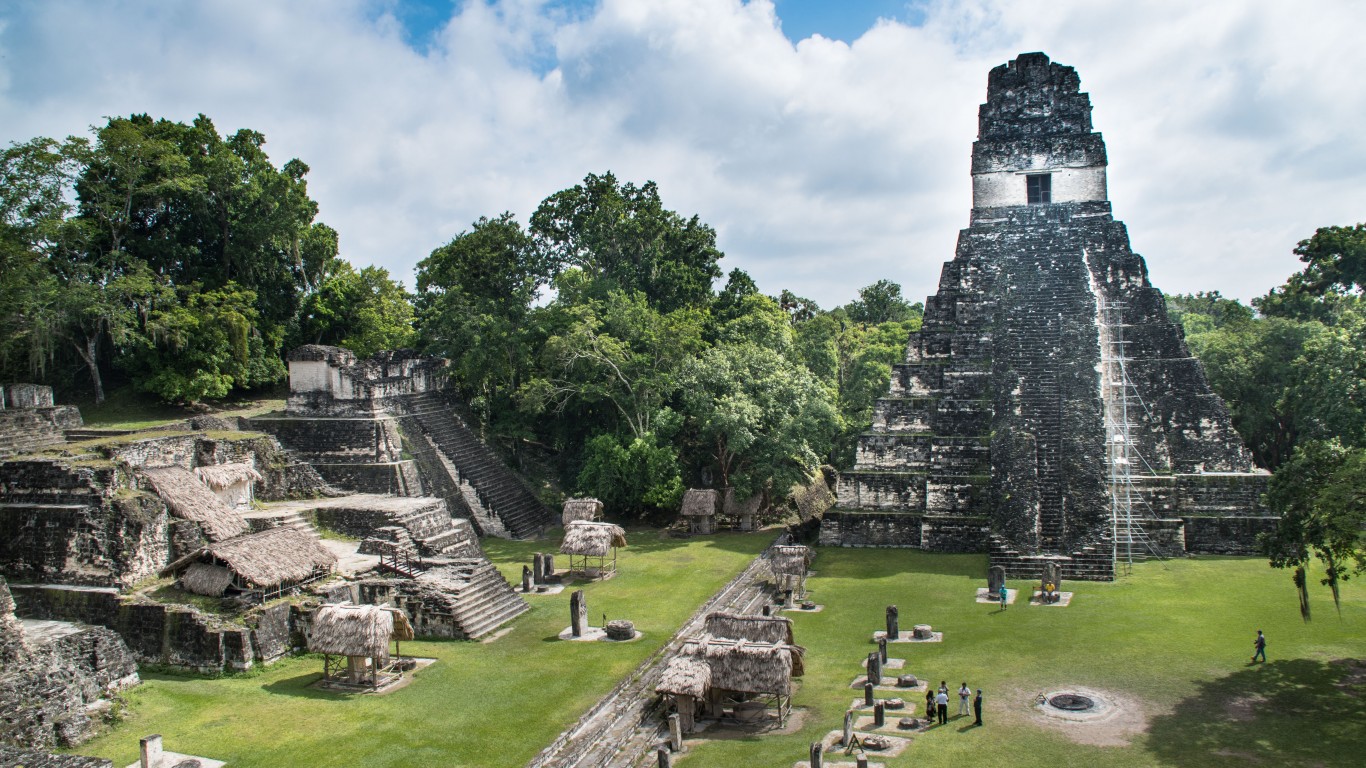
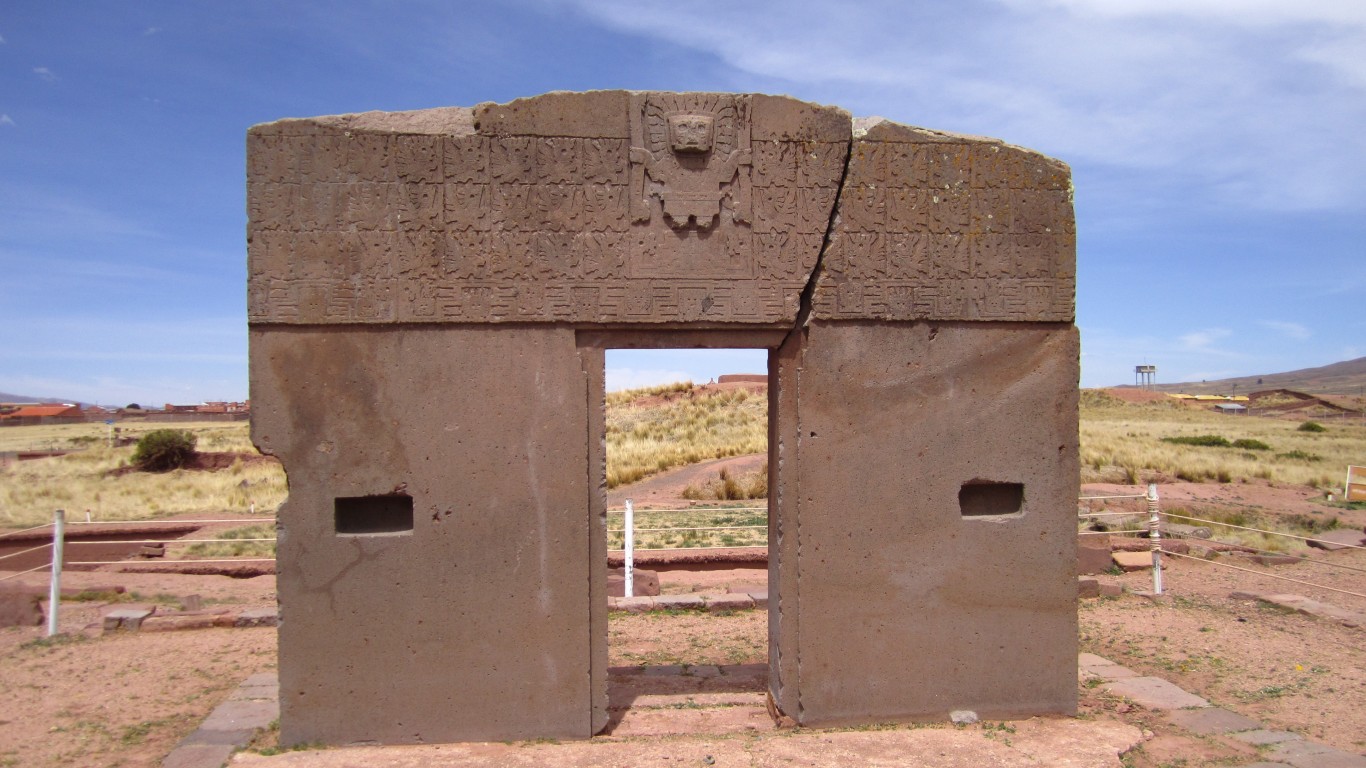
 24/7 Wall St.
24/7 Wall St.